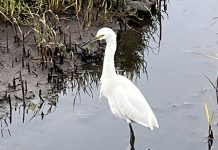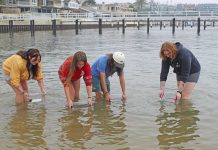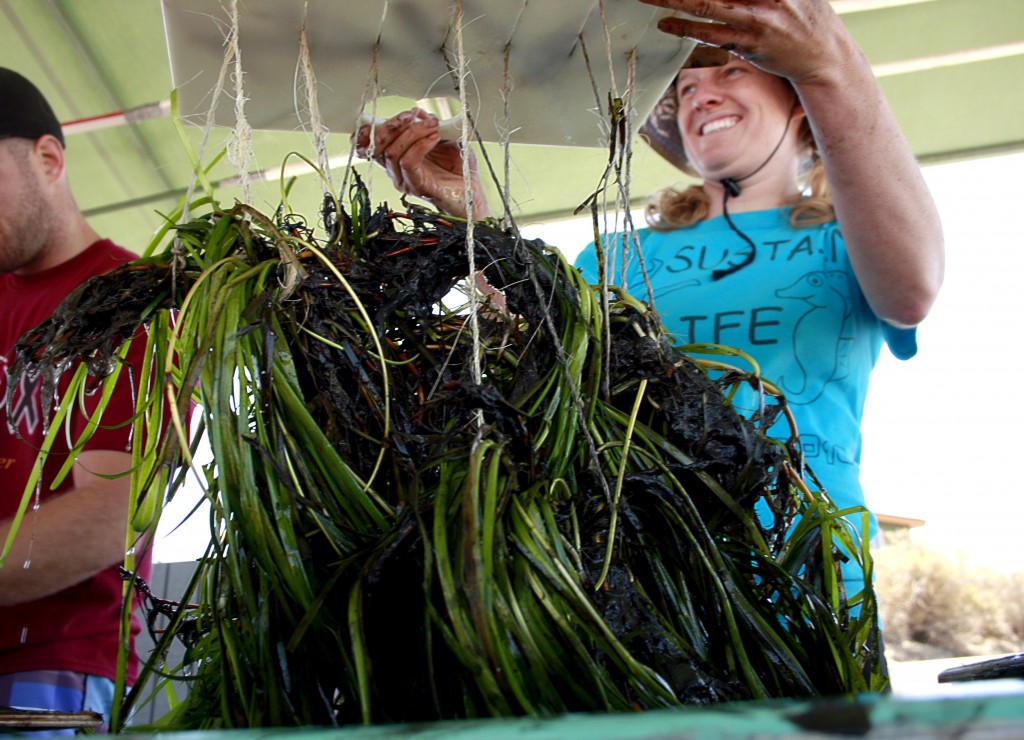
— Photo by Sara Hall ©
Eelgrass is alive and well in the Upper Newport Bay, according to an expert who provided an update on the restoration project to the Newport Beach Harbor Commission this week.
They have been working to preserve and restore the important plant for several years now, said Orange County Coastkeeper Marine Restoration Director Sara Briley, who gave a presentation to the Commission on Wednesday.
“It’s a good time for eelgrass in the bay,” Briley said. “We’re really excited.”
In a map display, Briley pointed out the abundance of eelgrass in 2004 – nearly one acre in Upper Newport Bay – compared to three years later when there was virtually none.
“This is really one of the reasons why we started our eelgrass restoration project at Coastkeeper,” Briley said.
During that time a major dredging project was happening in the bay, which – while it was a good thing for eelgrass in the long run – caused a number of problems in the short term, she explained.
The goal was to bring back that one acre and establish a sustainable eelgrass habitat in Upper Newport Bay, she said.
They have been working on adding the plant to the bay every summer since 2012. The group has utilized a few different methods, including direct diver transplanting by hand, transplanting eelgrass remotely with frames, and buoy-deployed seeding.
Now, according to the latest review in 2016, there are more than eight acres of eelgrass in the Upper Newport Bay.
Several of the commissioners asked about eelgrass in the lower section of the bay.
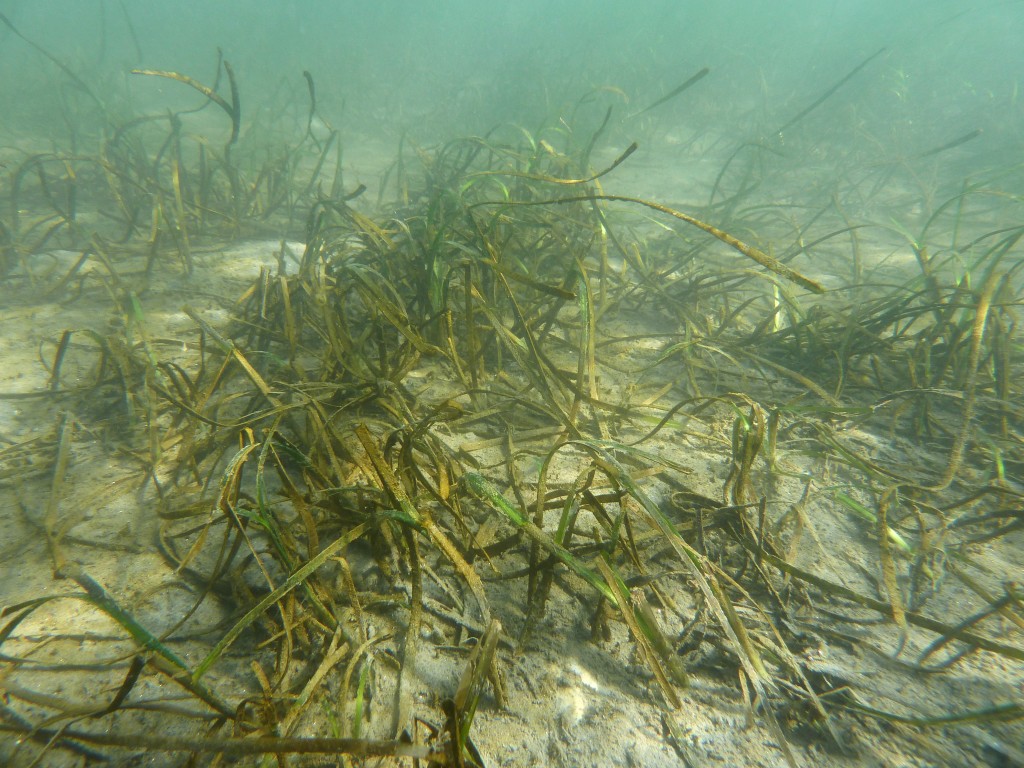
— Photo courtesy of Coastkeeper ©
“What I’ve noticed in the lower bay is that there is a lot more, I would say, polluted sediment,” Commissioner Duncan McIntosh commented. “I don’t think anything can grow there.”
Commission Secretary Bill Kenney asked if some of the same methods utilized in Upper Newport Bay could successfully be used to plant eelgrass in the Lower Bay.
It definitely could work, Briley noted.
“They have potential for down there, if the conditions are right,” she said.
Commission Chair Paul Blank asked for some clarification on the challenges and conditions and how they differ between Upper and Lower Newport Bay.
The flushing and amount of stagnant water is different, as well as the amount of traffic, Briley answered. The species of eelgrass in the entrance channel in Lower Newport Bay is slightly different, so they would also need to be mindful of that, Briley added.
The unique underwater flowering plant is often considered an indicator of health for the entire ecosystem in the bay.
There could be major consequences if eelgrass beds are removed, Briley said.
It’s important to preserve and restore eelgrass, she emphasized. It’s a foundation species, meaning it’s presence provides an entire foundation for an entire community of organisms that wouldn’t have lived if it weren’t there, Briley explained. It also improved water clarity and is a major carbon sequester.
Briley explained the requirements needed for an ideal eelgrass habitat, including lots of light, good tidal flushing, and moderate wave disturbance.
Threats include sedimentation and storm water runoff, which can create poor water quality resulting in a low amount of light reaching the eelgrass.
For more information, visit coastkeeper.org.
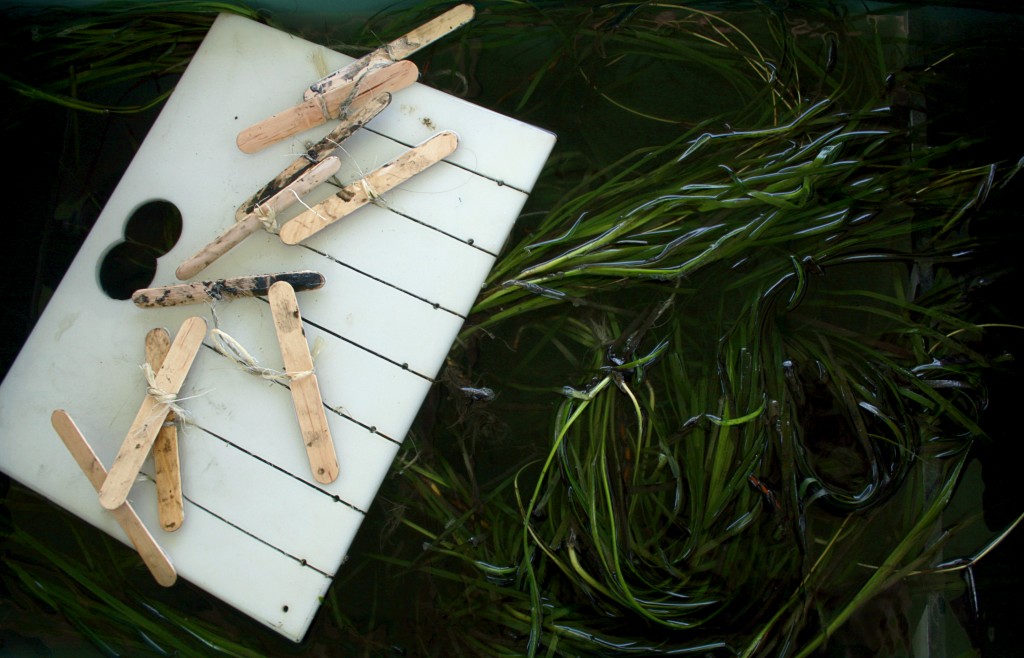
— Photo by Sara Hall ©


